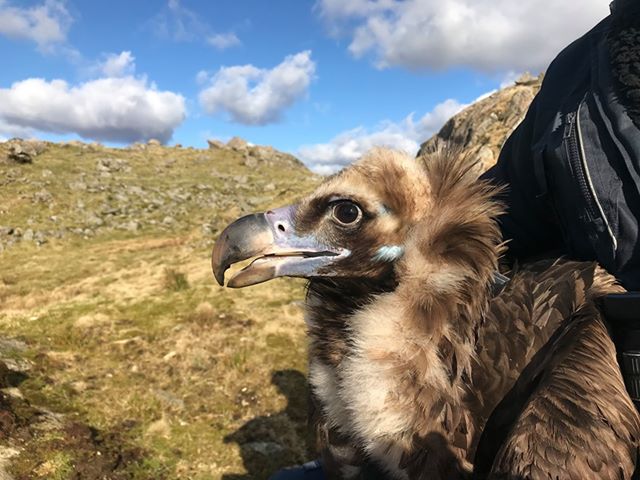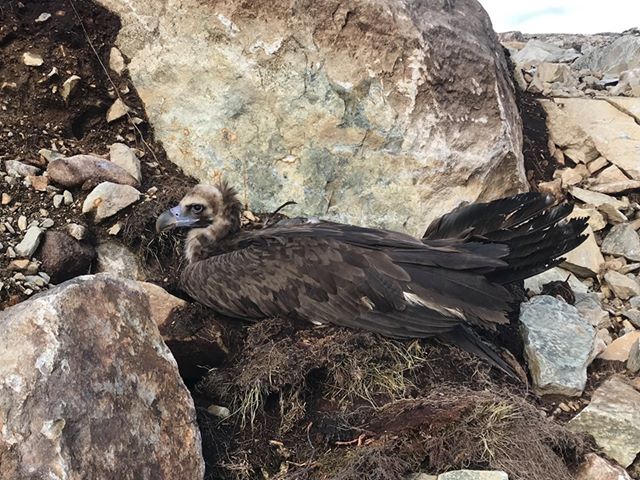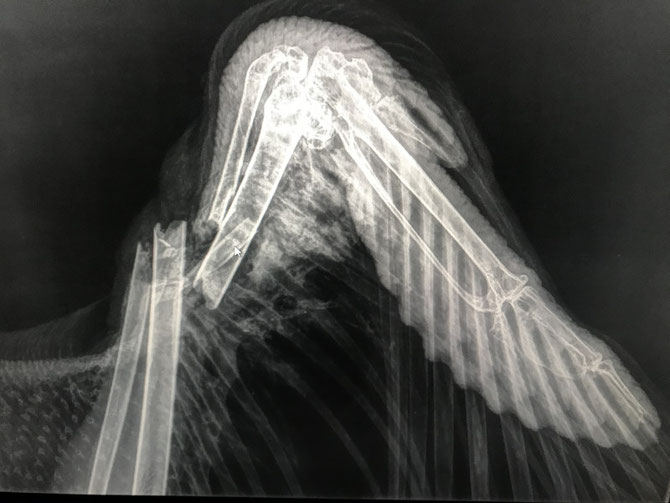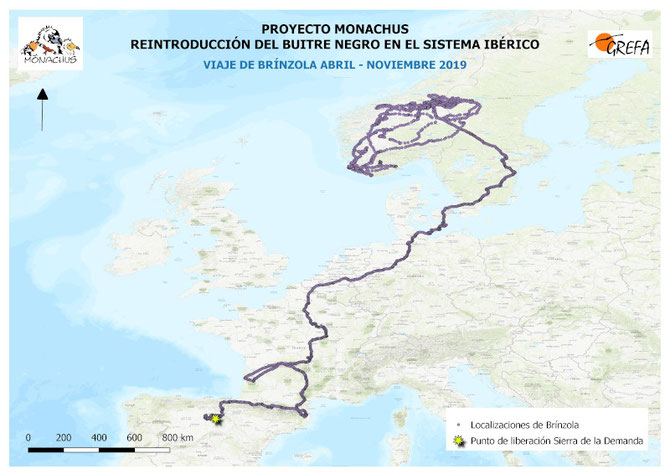
The journey of the widely beloved Cinereous Vulture Brínzola that inspired bird lovers across Europe with her fascinating travels came to a tragic end. GREFA’s Monachus Project released the female vulture in La Sierra de La Demanda in 2018, and months following that, she started her epic journey through Europe until she arrived in Norway. Sadly, this adventure has ended due to a collision, which is an overlooked threat to vultures. At this time, GREFA and their Norwegian colleagues are doing everything in their hands to save her.
Brínzola’s rescue mission

Last week, the Monachus project team realised that something was not right with Brínzola as the data from her transmitter indicated some odd positions and a lack of movements. On Friday 20 March, collaborators of the project were able to quickly rescue the vulture Rogaland province in the south of Norway thanks to the accurate location provided by her transmitter. It seems that Brínzola collided with the cables of an antenna of a wind farm, which unfortunately caused the fracture of her right wing.

The rescue team transferred the bird at the Norwegian Wildlife Hospital, which is a specialised centre. Aviv Livnat (the head veterinarian) with the support of GREFA were collaborating closely to discuss the best course of action. After a complicated surgery, which aimed to restore the damaged wing fully, they had to amputate the wing to ensure that Brínzola’s survived. The vulture has a long recovery ahead of her, and only time will tell how she responds after the complicated surgery. We will keep you posted on how Brinzola’s evolves after the surgery, let’s hope that the bird recovers.
The epic travels of Brínzola

The Monachus Project developed by GRAFA released Brínzola along with 15 other vultures in 2018 as part of its aims to restore the long-extinct populations of Cinereous Vultures in the northern part of the Iberian mountains.
Since the beginning of her epic journey in March 2019, Brínzola has flown over eight countries, reaching Norway after a non-stop 3000km trip. She remained in Norway since May, a country that has never witnessed this species in its skies, flying over to Sweden from time to time.
Source: GREFA

Threats to vultures caused by energy infrastructure
The Vulture Multi-species Action Plan (Vulture MsAP), co-developed by us here at the Vulture Conservation Foundation, and endorsed by the Convention for Migratory Species (CMS), identified the often overlooked threat to vultures posed by energy infrastructure particularly electrocution and collisions. Collision with energy infrastructure occurs when vultures are unable to distinguish the power line or wind turbine against the background of the natural vegetation as they fly near them.
Mitigating the threat of collisions
Compared to preventing collisions, mitigating electrocutions is relatively straightforward, as the insulation of cables in high-risk poles is relatively easy and inexpensive. In the long term, selecting less dangerous pole designs, or even burying lines in high-biodiversity areas seem better options. There are many projects, including our own LIFE-funded projects such as LIFE Rupis, Vultures Back to LIFE, LIFE GYPHELP and LIFE Re-Vultures, that are working to tackle the threat of electrocution with electricity infrastructure. The MAVA Foundation is also funding projects across the eastern Mediterranean flyway to minimise the danger of electrocution and collision.
However, mitigating collisions is more complex because vultures’ large sizes, visual fields and flying styles make them particularly vulnerable, especially in favoured foraging or roosting areas. In addition, it is often difficult to communicate with authorities and wind power companies to alert them of imminent collision risks and request shutdowns of dangerous turbines.
Follow us on Facebook and Twitter to stay updated with Brínzola and other vulture news.



